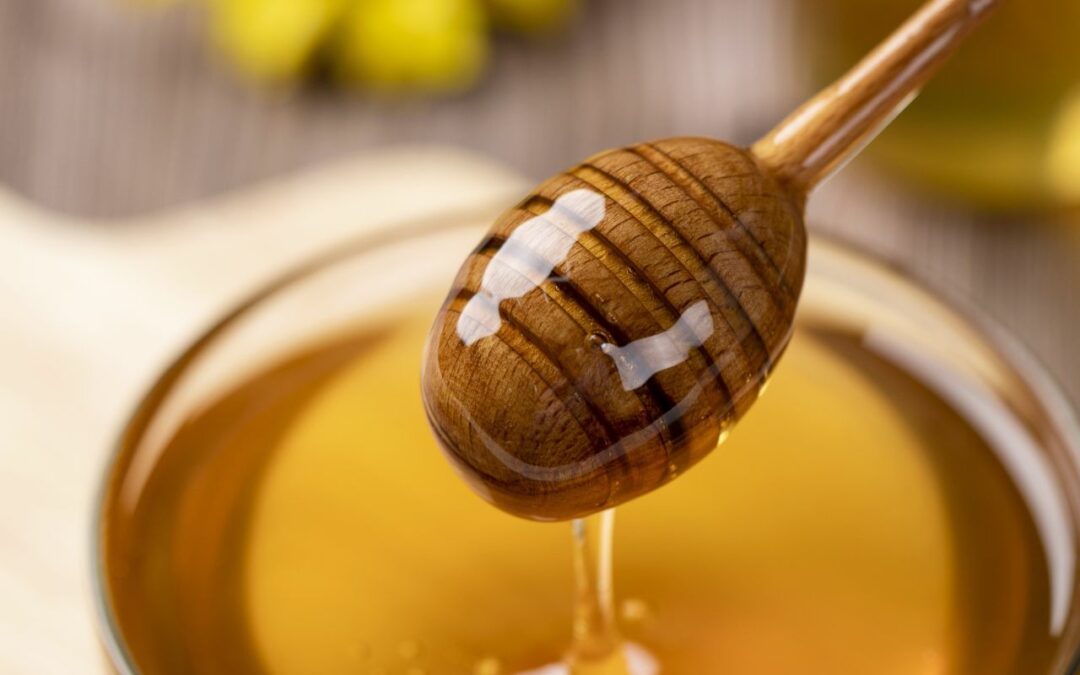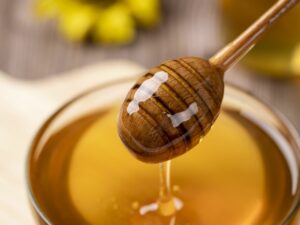Does honey go bad or expire? You’ve probably heard the story: archaeologists uncovered an ancient Egyptian tomb and found 3000 year old jars of honey still edible and perfectly preserved.
Sounds unbelievable, right? But it’s totally true.
Honey’s shelf-stability is pretty amazing. But there are times you’ll want to toss it.
We’ll dive into the science that makes honey so long-lasting and give you practical tips to help you store and enjoy your honey safely and confidently.
Does Honey Go Bad or Expire?
Honey’s unique chemical makeup makes it one of the most shelf-stable foods on the planet.
According to the National Honey Board:
Honey stored in sealed containers can remain stable for decades and even centuries! However, honey is susceptible to physical and chemical changes during storage; it tends to darken and lose its aroma and flavor or crystallize. These are temperature-dependent processes, making the shelf life of honey difficult to define.
They also add that, “Properly processed, packaged and stored, honey retains its quality for a long time.” Commercially sold honey is usually given a two year best by date. But honey can usually last much longer than that if properly stored.
But does all honey last forever? The short answer is no.
The Science Behind Honey’s Longevity
Honey resists spoilage for a few reasons. (1)
Honey has:
Low Moisture
Honey contains less than 18% water, making it an unwelcoming environment for bacteria and mold to grow.
High Sugar Concentration
Honey’s high sugar content creates osmotic pressure that dehydrates microbes.
Acidity
Honey contains organic acids like gluconic acid that contribute to honey’s low pH, which ranges from about 3.2–4.5.
This acidic environment makes it an unfriendly environment for microbes.
This also helps with honey’s preservation and gives it antimicrobial properties.
Natural Antimicrobial Compounds
The National Institute of Health reports that, “Honey exhibits a broad-spectrum of antibacterial activity against both Gram-positive bacteria and Gram-negative bacteria, including antibiotic-resistant (MRSA) ones. Honey has been shown to have strong activity against many bacteria in both media and in culture.”
Used medicinally since ancient times, honey contains enzymes like glucose oxidase, which produces hydrogen peroxide, a natural antimicrobial preservative. (2)
A rare type of honey called Manuka honey, made by bees only in New Zealand and parts of Australia, contains a compound called methylglyoxal (MGO) that has even stronger antimicrobial activity than hydrogen peroxide alone. Manuka honey and MGO have shown evidence in studies to promote wound and gut healing and is used therapeutically around the world. (3)
Produced by bees that pollinate the Manuka bush (Leptospermum scoparium) it’s also great for hydrating, brightening skin, and can be used as a base for honey face mask recipes.
Factors that Can Cause Honey to Go Bad
While pure honey doesn’t easily spoil, there are a few reasons it can degrade.
Contamination: Introducing moisture or food particles into your honey jar can lead to fermentation. Always use a clean, dry utensil to scoop your honey.
Improper Storage: Exposure to heat or humidity may cause honey to darken or lose flavor. Always make sure the lid is screwed on tight and store in a cool, dark cabinet away from a heat source (like near an oven).
Adulterated Honey: Some commercial brands ultra-filter, and add sweeteners and cheap syrups to honey to cut costs. But this also removes beneficial compounds that naturally preserve honey.
👉 Tip: For the highest quality honey, always buy raw or minimally processed honey. “Organic” on the label doesn’t mean it’s pure either. Look for local honey producers or buy from trusted sources that are transparent about their honey production and its sources.
Crystallization Does Not Equal Spoilage
If your honey turns cloudy or gritty, don’t panic—it’s crystallization, not spoilage.
This natural process happens when glucose separates from water. To restore its smooth texture, gently warm the jar in a bowl of hot water.
It can still be added to hot tea or coffee and will sweeten and dissolve perfectly.
See also

Try This Recipe: Honey Sriracha Shrimp Tacos
Honey Shelf Life and Storage Tips
Shelf Life: Indefinite if stored properly.
Storage: Keep in a tightly sealed container at room temperature, away from sunlight.
Avoid Refrigerating Honey: It’s not harmful, but encourages it to crystallize faster.
FAQ: Honey Shelf Life & Safety
Q: Can honey grow mold?
A: Not unless it’s contaminated with moisture or food particles. Pure honey is naturally mold-resistant.
Q: Is crystallized honey safe to eat?
A: Absolutely. It’s a natural process that happens to honey over time, and doesn’t affect the safety or nutrition of the honey.
Q: What’s the difference between raw and regular honey?
A: Raw honey is minimally processed and retains more nutrients. Regular honey may be pasteurized and filtered.
Q: How can I tell if my honey is spoiled?
A: Look for signs of fermentation like bubbles, sour smell, or separation. If in doubt, toss it.
Q: Does honey need to be refrigerated?
A: No. Room temperature storage for honey is best.
Final Thoughts
Honey’s resilience is science-backed magic.
With proper storage and smart sourcing, your honey can stay fresh for years.
So go ahead, drizzle it, stir it, or spoon it straight from the jar and enjoy it without worry.
Further Reading
Should Honey Be Refrigerated?
Should Mustard Be Refrigerated?
Does Molasses Go Bad?
Should Soy Sauce be Refrigerated?
Does Olive Oil Go Bad?
Better Living uses affiliate links. If you make a purchase through them, we may receive a small commission (for which we are deeply grateful) at no cost to you.







